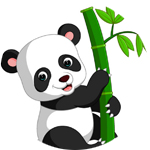Top 10 Most Common Chinese Numeral & Measure Words , 最常用的10个中文数量词 , zuì cháng yòng de shí gè zhōng wén shù liàng cí。
A Person , 一个人 , yí gè rén。
Two Bugs , 两只虫 , liǎng zhī chóng。
Three Pigs , 三头猪 , sān tóu zhū。
Four Horses , 四匹马 , sì pǐ mǎ。
Five Pens , 五支笔 , wǔ zhī bǐ。
Six Knives , 六把刀 , liù bǎ dāo。
Seven Mountains , 七座山 , qī zuò shān。
Eight Mirrors , 八面镜子 , bā miàn jìng zi。
Nine Cars , 九辆汽车 , jiǔ liàng qì chē。
Ten Pairs Of Chopsticks , 十双筷子 , shí shuāng kuài zi。
量词通常用来表示人、事物或动作的数量单位的词,叫做量词。如头、匹、条等。量词,与代表可计数或可量度物体的名词连用或与数词连用的词或词素,常用来指示某一类别,为名词所指派的物体可按其形状或功用而被归入这一类别(如汉语“三本书”中的“本”)。
Quantifiers are usually words used to express the unit of quantity of people, things or actions, called quantifiers. Such as head, horse, strip, etc. Quantifiers, words or morphemes used with nouns representing countable or measurable objects or with numerals, are often used to indicate a certain category. Objects assigned to nouns can be classified into this category according to their shape or function ( Such as the “ben” in the Chinese “Three Books”).
数词(Numeral),简称(num),是指表示数目多少或顺序多少的词。英语的数词可以作句子的主语、宾语、表语和定语。数词分为两大类,即基数词和序数词。基数词表示数目,如:one,two,three,four……;序数词表示顺序,如:first,second,third,fourth……序数词前一般要加the。
Numeral (numeral), abbreviated (num), refers to the number or sequence of words. English numerals can be used as the subject, object, predicative and attributive of a sentence. Numerals are divided into two categories, namely cardinal numerals and ordinal numerals. Cardinal numbers indicate number, such as: one, two, three, four……; Ordinal numbers indicate order, such as: first, second, third, fourth…… Ordinal numbers usually have to be added before the.
基本类型
因为量词是用以表示人、事物或动作的数量单位的词,所以“一个人、两只梨 、三口钟 、一把茶壶”中的“个、只、口、把”以及表示度量衡的“斤、公斤、斗、升、尺、寸、丈”等都是用以表示人或事物的数量单位的不同类型。
量词分为物量词和动量词两类。物量词表示人和事物的计算单位,如“一个人”中的“个”。动量词表示动作次数和发生的时间总量,如“看三次”中的“次”、“看三天”中的“天”。
修饰名词的量词,又可根据名词是否可数分为两种情形:
可数名词,如人、桌子;
不可数名词,如糖、水。
在常见的外语中,一般来说可数名词没有量词,直接把数词后面跟随可数名词,例如:three dogs。外国人学习汉语时,常常对可数名词使用量词感到别扭,记忆量词与可数名词的固定搭配用法就更困难了。全世界各种语言中,不可数名词都要与作为度量单位的量词搭配使用,这是普遍的必然规律,例如:一张纸 a piece of paper; 三克糖 three grams of sugar; 两杯水 two cups of water. 所以语言学家研究的焦点是可数名词的量词这一汉语特有的语法现象。
Basic Types
Because quantifiers are words used to express the unit of quantity of people, things, or actions, the “one, only, mouth, and handle” in “a person, two pears, three bells, and a teapot” and the “jin” which means weight , Kilograms, buckets, liters, feet, inches, feet, etc. are all different types of units used to express people or things.
Quantifiers are divided into two categories: substance quantifiers and verbal quantifiers. Quantifiers indicate the unit of calculation of people and things, such as “piece” in “a person”. The verbal quantifiers indicate the number of actions and the total amount of time they occur, such as “times” in “watch three times” and “days” in “watch three days”.
The quantifiers that modify nouns can be divided into two situations according to whether the nouns are countable:
Countable nouns, such as person, table;
Uncountable nouns, such as sugar and water.
In common foreign languages, generally countable nouns do not have quantifiers, and countable nouns are directly followed by the number, for example: three dogs. When foreigners learn Chinese, they often feel awkward when using quantifiers for countable nouns. It is even more difficult to remember the fixed collocation usage of quantifiers and countable nouns. In all languages around the world, uncountable nouns must be used with quantifiers as a unit of measurement. This is a universal inevitable rule, for example: a piece of paper; three grams of sugar; two cups of water cups of water. Therefore, the focus of linguists’ research is the grammatical phenomenon unique to Chinese, the quantifier of countable nouns.

